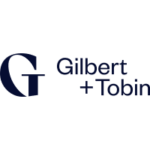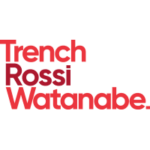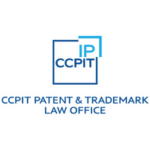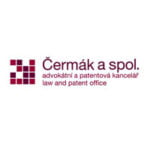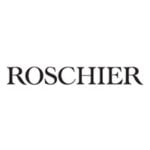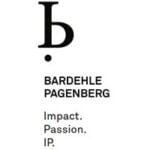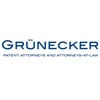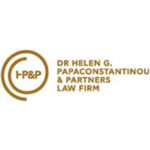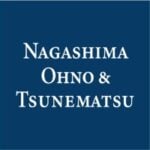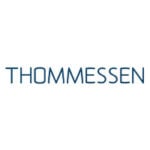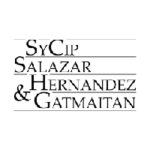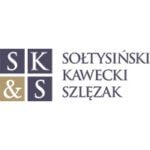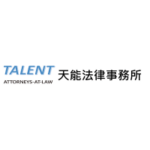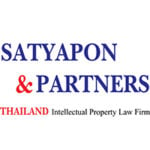-
What is the forum for the conduct of patent litigation?
An action for patent infringement in Singapore is governed by Part 13 of the Patents Act 1994 (Cap 221, Rev Ed Sing) (“PA”). Before 1 April 2022, the Intellectual Property Office of Singapore (“IPOS”) had the jurisdiction to hear matters in relation to infringement if the parties agree to refer the matter to IPOS. However, that has since changed as a result of an amendment to the PA. From 1 April 2022, subject to any contrary agreement (e.g. agreement to arbitrate), only the General Division of the High Court has the jurisdiction to hear claims of patent infringement.
For invalidation (leading to a revocation) of patents, the appropriate forum to bring such a claim in will depend on the stage in which the application for revocation is brought. There are two categories of cases where an application for revocation is brought. The first is where there is an on-going action for patent infringement in the General Division of the High Court. The second is where a party seeks to invalidate (and then revoke) a patent where there is no infringement action already in place.
For matters commenced in the General Division of the High Court, if the invalidity of the patent is raised as a defence to infringement, the defendant can also include a prayer for the revocation of the claimant’s patent in its Defence and Counterclaim. This counterclaim for a revocation of the patent will be heard together with the ongoing action for patent infringement. The Court of Appeal in Sunseap Group Pte Ltd & 2 Ors v Sun Electric Pte Ltd [2019] 1 SLR 645 clarified that a defendant is entitled to put in issue the validity of only claims that have been asserted to be infringed by the claimant. Consequently, if the claimant does not assert that all of the claims of the patent have been infringed, the defendant can revoke only part of the patent. This is unless the claimant asserts that all of the independent claims of the patent have been infringed and the defendant successfully proves that all the asserted independent claims are invalid. Based on the Court of Appeal’s comments in dicta, in such a situation when all the independent claims of the patent are found to be invalid, the dependent claims must necessarily fall away and the patent as a whole must be regarded as invalid. The correctness of this dicta has not been tested in any Singapore Court decision since Sunseap. In the Court of Appeal’s most recent decision in IIa Technologies Pte Ltd v Element Six Technologies Limited [2023] SGCA 5, the Court of Appeal also declined to comment on the correctness of this observation, and deferred its comments to an “appropriate future case”.
In the second case where a party seeks to invalidate and revoke a patent where there is no infringement action already in place, from 1 April 2022, the claimant can choose to commence the revocation action at either the General Division of the High Court or at IPOS. Before 1 April 2022, only the Registrar at IPOS had exclusive jurisdiction to hear a revocation action where there is no infringement action. From 1 April 2022, the PA has been amended such that the General Division of the High Court also has concurrent jurisdiction to hear a revocation action, even in the absence of an infringement action.
The net result is therefore, in practice, from 1 April 2022, a defendant in an infringement action will no longer be limited in its revocation counterclaim. A defendant in an infringement action will be entitled to revoke the entire patent even if the plaintiff does not assert all of the independent claims in the patent. This is because the defendant will, in any event, be entitled to file a full revocation action as a counterclaim as if it is a standalone revocation action. This will however have to be confirmed in a subsequent Court decision.
The Supreme Court has designated several High Court Judges as Intellectual Property Judges who have specialist experience and knowledge to hear intellectual property cases.
An appeal arising from a case heard in the General Division of the High Court relating to the law of patents will be heard by the Singapore Court of Appeal, the apex Court of Singapore.
-
What is the typical timeline and form of first instance patent litigation proceedings?
A rough timeline is as follows: 1. The claimant files and serves on the defendant the Originating Claim, Statement of Claim and Particulars of Infringement. The Particulars of Infringement must state which of the claims in the specification of the patent are alleged to be infringed, and must give at least one instance of each type of infringement alleged. 2. Within 14 days of the service of the Statement of Claim and Particulars of Infringement, the defendant has to file and serve a Notice of Intention to Contest or Not Contest in the proceedings. 3. If the defendant intends to put in issue the validity of the patent (or just asserted patent claims whichever the case may be), the defendant must give prior notice of his intention to put in issue the validity of the patent within 14 days of the service of the Statement of Claim by filing the Notice of Intention to Put In Issue the Validity of the Patent (“Notice”). 4. If the defendant does not challenge the validity of the patent, its Defence (and Counterclaim if applicable) will be due within 21 days after the Statement of Claim is served on the defendant, whichever is the later date. If the defendant files the Notice, the defendant has to file its Defence and Counterclaim and Particulars of Objection within 42 days of the service of the Statement of Claim. 5. The then claimant has to file its and Defence to Counterclaim within 14 days of the service of the Defence and Counterclaim. No further pleadings shall be filed unless the Court grants permission. Under the new Rules of Court 2021, the Court will consider whether it is appropriate to order parties to exchange affidavits of evidence-in-chief (“AEICs”) before discovery, but this is rarely ordered for patent cases. At this stage, the Court will also consider whether the issues of claim construction should be heard separately from or together with infringement and/or validity, and in general how the trial of the matter should be conducted. The Court will also consider the issues of discovery and bifurcation. The Court may order a bifurcation either on its own volition or pursuant to an application from a party in the proceedings. It is more common for the Court to bifurcate the issue of liability and the issue of damages. Infringement and invalidity are generally heard together due to the need to engage expert witnesses for common issues such as claim construction. See also the answer to question 26 below.
The new Rules of Court 2021 introduced a new application called the Single Application Pending Trial (“SAPT”). This is an omnibus application which requires the parties to consolidate all interlocutory orders that the parties intend to seek from the Court in one single application. The Court will usually direct the SAPT to be filed after discovery. All interlocutory applications (save for those specifically excepted) must be filed in the SAPT. If a party wishes to file an application outside of the SAPT, the party must seek the Court’s permission to do so. Such an application will be termed as a Preliminary Application.
It typically takes around 1.5 to 2 years or more from the commencement of the proceedings to obtain a first instance decision.
With effect from 1 April 2022, the Supreme Court of Judicature (Intellectual Property) Rules 2022 (“SCJIPR”) introduced a simplified optional track for Intellectual Property litigation known as the “Simplified Process for Certain Intellectual Property Claims” (“Simplified Process”) to resolve intellectual property disputes in a quicker and more cost-effective manner. The Simplified Process is applicable for certain intellectual property claims (including, among others, actions of patent infringement under section 67 of the PA and declaration of non-infringement of a patent under section 78 of the PA) where: (a) the monetary relief claimed by each party in the action does not or is not likely to exceed $500,000; or (b) where all parties agree to the application of the simplified process. Even if the aforementioned two requirements are fulfilled, the Court will also consider these other factors: (a) whether a litigant can only afford to participate in the proceedings under the simplified process; (b) the complexity of the issues; (c) whether the estimated length of the trial is likely to exceed two days; and (d) any other relevant matter. For claims under the Simplified Process, the total costs recoverable is subject to an overall cap of S$50,000 for the trial, and an overall cap of S$25,000 for any separate assessment of monetary relief. In line with the spirit of streamlining intellectual property dispute resolution, the court will also give directions on all matters relating to the dispute expeditiously and where practicable, will endeavour to ensure that the trial is completed within two days.
-
Can interim and final decisions in patent cases be appealed?
Generally, interim decisions may be made either by High Court Assistant Registrars or High Court Judges. The High Court Registry decides whether a matter should be heard by a High Court Assistant Registrar or a High Court Judge. Parties in the proceedings may also make a request for an interlocutory application to be heard by a High Court Judge at first instance instead of a High Court Assistant Registrar.
All interim decisions (including decisions arising from an SAPT) that are made by the High Court Assistant Registrars can be appealed to a single Judge in the General Division of the High Court. These are called Registrar’s Appeals. Registrar’s Appeals are generally heard and decided within a month of the first instance interlocutory decision.
Not all interim decisions that are made by Judges of the General Division of the High Court can be appealed. Under the Supreme Court Judicature Act (Cap 322), there are particular types of interim decisions that cannot be appealed or may be appealed only with leave of the Court, either to the Appellate Division of the High Court or to the Court of Appeal.
For first instance decisions following the trial of a patent suit (including matters started by the Simplified Process), there is only one round of appeal to the Court of Appeal, the apex Court of Singapore. Parties do not need to obtain leave to appeal to the Court of Appeal. The notice of appeal must be filed within 28 days after the date of the judgment or order. An appeal may take roughly 6 months to 1 year to be heard and decided by the Court of Appeal. For revocations of patents heard at the IPOS Registry, a party has the right to appeal the decision to the General Division of the High Court except where the decision: (a) relates to the form of the abstract; (b) relates to the omission of disparaging or offensive matter from a specification; (c) relates to the prohibition of publication of information prejudicial to national security; (d) relates to a decision by the Registrar not to grant a request to conduct a re-examination of the specification of a patent for an invention on the basis that the request is frivolous, vexatious or an abuse of the process; (e) relates to a decision by the Registrar not to revoke a patent under section 38A of the PA, which governs the IPOS system of re-examination of the patent after its grant (see question 16 below) and/or (f) is given under rules which except the right of appeal. A party who wishes to further appeal the General Division of the High Court’s decision on revocation to the Court of Appeal will need to seek the leave of the Court of Appeal to do so. Such an appeal will only be allowed if the IPOS Registry’s decision was given on a specified matter listed in section 90(3) of the PA. Generally, there is no automatic stay of proceedings until and unless a party applies for and obtains a stay of execution of the decision that is the subject of an appeal.
-
Which acts constitute direct patent infringement?
A person is liable for direct or primary infringement of the patented product or process if he does in Singapore any of the prohibited acts stipulated in section 66(1) of the PA without the consent of the patentee, unless the defences in section 66(2) of the PA apply. Under section 66(1)(a) of the PA, prohibited acts in relation to a patented product are: (a) making the product; (b) disposing of the product; (c) offering to dispose of the product; (d) using the product; (e) importing the product; or (f) keeping the product whether for disposal or otherwise. Under section 66(1)(b) and (c) of the PA, prohibited acts in relation to a patented process are: (a) using the process; (b) offering the process for use in Singapore when he knows, or it is obvious to a reasonable person in the circumstances that its use without the patentee’s consent would be an infringement of the patent; (c) disposing of any product obtained directly by means of the process; (d) offering to dispose of any product obtained directly by means of the process; (e) using any product obtained directly by means of the process; (f) importing any product obtained directly by means of the process; or (g) keeping any product obtained directly by means of the process, whether for disposal or otherwise. A person who does any of the prohibited acts stated above is not liable for infringement if the defences in section 66(2) of the PA apply. Defences to patent infringement are addressed in greater detail in Question 7 below.
-
Do the concepts of indirect patent infringement or contributory infringement exist? If, so what are the elements of such forms of infringement?
The concepts of indirect or secondary patent infringement exist in Singapore although a party’s indirect or secondary liability is governed by the common law position on joint tortfeasorship. Unlike the English position in which contributory infringement is statutorily enshrined under section 60(2) of the UK Patents Act 1977, indirect or secondary patent infringement is not legislatively provided for in Singapore. A person may be liable as a joint tortfeasor in two ways. The first is where the party conspires with the primary party or induces the commission of the infringement. The party must be shown to have actually induced the infringement, or there is evidence of an agreement or understanding to carry out the infringing acts. The mere assistance of infringement by selling or offering to sell or dispose an article with knowledge that it is going to be used to infringe is generally insufficient to constitute a conspiracy to infringe. The second is where two or more parties join in a common design pursuant to which the infringing acts were carried out. In establishing the existence of a common design, it is unnecessary for the parties to have mapped out a plan and in some cases, tacit agreement suffices.
-
How is the scope of protection of patent claims construed?
Under section 113(1) of the PA, the scope of protection conferred by a patent is determined by the claims of the specification of the patent. Ascertaining the meaning of the claims is an exercise in claim construction, which is undertaken with a purposive approach. The key principles to claim construction are as follows: (a) in ascertaining the true construction of a patent specification, the claims themselves are the principal determinant. What is not claimed is deemed to be disclaimed; (b) the description and other parts of the patent specification form the context for and may assist in claim construction; (c) the claims are to be construed purposively and not literally. Since this is aimed at giving the patentee the full extent, but not more, of the monopoly which a person skilled in the art and reading the claims in context would think the patentee was intending to claim, the threshold question is to ask what the notional skilled person would have understood the patentee to mean by the use of the language in the claims; (d) generally, the notional skilled person should be taken to be a skilled technician aware of all relevant prior art but incapable of a scintilla of invention or to engage in lateral thinking; (e) a Court is not entitled to disregard clear and unambiguous words in a patent claim, or to rewrite or amend the claim; and (f) an article infringes a patent if it falls within the words of one of the claims of a patent and usurps each and every one of the essential elements of that relevant claim.
The general principle under the doctrine of equivalents is that a device which is functionally equivalent to the patented invention will be held to infringe it, notwithstanding that certain essential features of the patented invention are absent from the device. This doctrine has not been accepted in Singapore on the basis that a wholly functional approach to claim construction objectionably disregards the clear and unambiguous words stated in the patent claims when such words must be given their natural and ordinary meaning.
-
What are the key defences to patent infringement?
The two key defences to patent infringement are (1) the invalidity of the patent, which is a complete defence; and (2) non-infringement. While rarely relied on, a defendant may also rely on exceptions created by section 66(2) of the PA for acts which would otherwise constitute infringement by virtue of being prohibited by section 66(1) of the PA. The main categories of exceptions in section 66(2) of the PA are: (a) acts which are done privately and for non-commercial purposes; (b) acts which are done for experimental purposes relating to the subject-matter of the invention; (c) uses of a patented product or process by aircraft and ships which had temporarily or accidentally entered into Singapore’s airspace or territorial waters (as the case may be) or by exempted aircraft or ships; and (d) the parallel importation into Singapore, with consent of the foreign patentee or his licensee, of any patented product or any product obtained by means of a patented process or to which a patented process has been applied. Further, under section 71(1) of the PA, a person who in Singapore before the priority date of the invention does in good faith an act which would constitute an infringement of the patent if it were in force, or makes in good faith effective and serious preparations to do such an act has the right to continue to do that act notwithstanding the grant of the patent. Where the validity of the patent is put in issue as a defence to infringement, it is also common to include a counterclaim to revoke the patentee’s patent on one or more of the grounds of revocation due to patent invalidity as stated in section 80(1) of the PA. The grounds of revocation are examined in more detail in Question 8.
-
What are the key grounds of patent invalidity?
The grounds of patent invalidity are exhaustively stated in section 80(1) of the PA: (a) the patent is not a patentable invention, i.e. it lacks novelty, it does not involve an inventive step, or is incapable of industrial application, or that it is an invention the publication or exploitation of which will generally be expected to encourage offensive, immoral or anti-social behaviour; (b) the patent was granted to a person who was not so entitled; (c) the specification of the patent does not disclose the invention clearly and completely for it to be performed by a person skilled in the art; (d) the matter disclosed in the specification of the patent extends beyond that disclosed in the application for the patent as filed; (e) an amendment or correction had been made to the specification of the patent or an application for the patent which should not have been allowed; (f) the patent was obtained fraudulently, on any misrepresentation or on any non-disclosure or inaccurate disclosure of any prescribed material information; and (g) the patent is one of 2 or more patents for the same invention having the same priority date and filed by the same party or his successor in title.
-
How is prior art considered in the context of an invalidity action?
What constitutes prior art
Under section 14(2) of the PA, prior art in the case of a particular invention comprises all matter which has at any time before the invention’s priority date been made available to the public (whether in Singapore or elsewhere). The concept of ‘prior art’ embraces a wide array of material and includes all informational matter whether a product, a process, or information about either. Written prior art may take the form of published articles, books and patent specifications which have been filed and published. Under section 14(3) of the PA, prior art for the purposes of assessing the novelty of a claimed invention also includes matter contained in an application for another patent which was published on or after the priority date of that invention, if that matter was contained in the application for that other patent both as filed and as published, and the priority date of that matter is earlier than that of that invention. Only patent applications which are filed in Singapore, or filed under the Patent Co-operation Treaty as an international patent which designates Singapore as the country in which protection for the invention is sought are relevant for section 14(3) of the PA. Section 15 of the PA states that section 14(3) of the PA is disregarded in conducting the obviousness assessment of a claimed invention. That means that matter contained in a patent application which was unpublished as at priority date of the claimed invention but which was subsequently published does not constitute prior art in determining whether the invention was obvious. Information about an invention which is made publicly available by oral disclosure may also constitute prior art. Further, prior art also includes prior demonstration or use of products or processes which makes the information embodied in them publicly available. Therefore, the trial use of a prototype traffic controller in public which gave the public ‘direct and unambiguous’ access to information contained in the invention placed that information into the prior art, thus anticipating the patent in suit for that invention. However, the following disclosures of matter constituting an invention made within 12 months prior to the date of filing the application will be disregarded: (a) disclosures of matters which had been obtained unlawfully or in breach of confidence; (b) where the disclosure of the matter was made in breach of confidence; (c) where the disclosure was made through displaying the invention at an international exhibition; (d) where the disclosure was made through the reading of a paper describing the invention before any learned society or published in the transactions of any learned society; and (e) where the disclosure is made by the inventor, or by a person who obtained the matter directly or indirectly from the inventor, in any circumstances not described in paragraphs (a) to (d) above. However, if the disclosure of the matter was a result of a publication by an intellectual property administrator who obtained the matter directly or indirectly from an inventor, then the disclosure shall not be disregarded unless the application was filed without the consent of the inventor or the publication was done erroneously. For example, an inventor’s earlier published patent application will not fall within the excepted categories of the grace period, unless publication of the earlier patent application was done so erroneously. Prior art is considered when the validity of a patent is being assessed particularly in respect of the ground of novelty and inventive step.
Relevance of prior art in the novelty assessment
An invention is novel if it does not form part of the state of the art (also known as ‘prior art’). After the prior art in relation to a particular invention is ascertained, a two-step inquiry is undertaken to determine whether the invention lacks the necessary novelty and is therefore anticipated by the prior art. The first is to ask whether the prior art discloses the invention. There is disclosure if the prior art contains ‘clear and unmistakable directions to do what the patentee claims to have invented’, in that the inventor of the cited prior art is clearly shown to have ‘planted his flag at the precise destination’ of the patentee’s claim. Alternatively, one may ask whether the performance of an invention in the prior art would necessarily infringe the patent if it were granted in respect of the patent-in-suit. Generally, in conducting the novelty inquiry, the claimed invention must be compared against each individual piece of prior art separately to determine whether it was anticipated by each piece of prior art. However, cross-referencing may be allowed where a later prior art document refers to an earlier document or where a series of documents forming a series of disclosures refer to each other. Nonetheless, where a later document references only one aspect of the earlier document, only that part (as opposed to the entire document or that chapter containing that reference) is to be read with that earlier document. Next is to ask whether the prior disclosure is enabling. As a preliminary matter, enablement is conceptually distinct from disclosure. While the disclosure is concerned with whether the prior art discloses an invention which if performed would necessarily infringe the patent-in-suit, the enablement focuses on whether the technical teaching of the prior art provides enough information to enable the person skilled in the art to work the invention as disclosed by the prior art. The person skilled in the art is a legal construct, being a person who: (a) possesses common general knowledge, being the mental equipment that is necessary for competency in the field of endeavour in question; (b) has a practical interest in the subject matter of the patent or be likely to act on the directions given in it; and (c) whilst unimaginative, and uninventive, is reasonably intelligent and wishes to make the directions of the patent work. The person skilled in the art can also consist of a notional team of persons having different skills, depending on the relevant art.
Relevance of prior art in the obviousness assessment
An invention will involve an inventive step if the invention is not obvious to a person skilled in the art having regard to the prior art. Prior art for the purposes of the obviousness assessment comprises all matter which has at any time before the invention’s priority date been made available to the public (whether in Singapore or elsewhere). Unlike the novelty assessment, in conducting the obviousness assessment, it is permissible for prior art references to be read collectively in a ‘mosaic’ if they can be put together by an unimaginative man with no inventive capacity. Whether a claimed invention involves an inventive step is determined with reference to the four-step Windsurfing approach: (a) identify the inventive concept embodied in the patent in suit; (b) assume the mantle of the normally skilled but unimaginative person in the art at the priority date and impute to him what was, at that date, common general knowledge in the art in question; (c) identify what, if any, differences exist between the prior art and the alleged invention; and (d) ask whether, viewed without any knowledge of the alleged invention, those differences constitute steps which would have been obvious to the skilled man or whether they require any degree of invention. One test in the obviousness assessment is whether the person skilled in the art would ‘assess the likelihood of success as sufficient to warrant actual trial’. This is also known as the ’obvious to try’ test. However, this test must be applied with care, given that not all inventions are solutions to problems that were known in the prior art and that in some cases the inventive step resides in the identification of the problem instead.
-
Can a patentee seek to amend a patent that is in the midst of patent litigation?
A patent that is the subject of a patent litigation may be amended in the midst of patent litigation. The patentee may only apply to do so if the validity of the patent has been put in issue before the Court or the Registrar. This would usually be in a case where there is a counterclaim filed by the defendant in a patent infringement action to invalidate and revoke the patent. Regardless of whether this post-grant amendment is sought before the Court or the Registrar, a patentee intending to do so must give notice of his intention to the Registrar and a copy of an advertisement containing relevant details of the patent sought to be amended must be published in the patent journal by the patent Registry. Such details include the full particulars of the amendment sought, whether the amendment is by way of deletion or rewriting of claims and the patentee’s address for service within Singapore. Any person may oppose the amendment and that person must give written notice of his intention to oppose to the patentee within 2 months after the publication of the advertisement. This notice is to be accompanied by a statement of opposition, which is to set out all the facts upon which the opponent relies and the relief sought. After the expiration of 42 days from the appearance of the advertisement, the patentee must make his application to amend by way of summons in the proceedings pending before the Court. A copy of the summons and a copy of the specification with amendments marked up in coloured ink must be served on the Registrar, the parties to the proceedings and any person who has given notice of his intention to oppose the amendment. All applications for post-grant amendments will be assessed according to the following criteria: (a) whether the patentee had disclosed all relevant information with regard to the proposed amendments; (b) whether the amendments comply with the statutory requirements; (c) whether the amendments introduce additional matter; (d) whether the amendments extend the scope of protection of the patent (i.e. the amended patent is broader than the patent in its current form); (e) whether there had been undue and inexplicable delay on the patentee’s part in taking out the amendment application; (f) whether the patentee had sought to obtain an unfair advantage from the patent by delaying the amendments which it knew were needed; and (g) whether the patentee’s conduct discourages the amendment of the patent. Following a successful application to amend the patent specifications, the patentee (i.e. the claimant) may be in a better position to resist any claims from the defendant that the patent in the suit is invalid on the ground of anticipation by the prior art. This is generally why a patentee seeks to amend its patent. However, the adverse implication to an application to amend a patent specification is that it indicates to the adverse party and to the Court that the unamended patent as granted may not be valid. In cases where the amendment is sought in proceedings before the Court, the Court has the discretion to direct whether the hearing of the patent amendment application should be at the trial of the patent infringement suit or separately before the trial of the patent infringement suit. While the patent amendment application is considered an interlocutory application where cross-examination of deponents is typically not allowed, given the complexity and the finding of facts involved in a patent amendment application, expert witnesses are usually cross-examined at the hearing of a patent amendment application that is separate from the trial of the suit.
-
Is some form of patent term extension available?
The patent term is 20 years beginning on the date the application for the patent was filed. The term of a patent may be extended on the following grounds: (a) There was an unreasonable delay by the Registrar in granting the patent. There is unreasonable delay only when, excluding any delays caused by the applicant: (i) more than 4 years have passed between the date of filing of the application for the patent and the date of issue of the grant; or (ii) more than 2 years have passed between the date on which the applicant filed a request for a search and examination report, or an examination report (as the case may be) and the date of issue of grant; (b) Where an applicant relies on the prescribed information of a corresponding application to obtain the grant of a patent in Singapore, there was an unreasonable delay in the issue of the corresponding patent or related national phase patent (as the case may be) and the patent office which granted that patent has extended its term on the basis of such delay; or (c) Where the subject of the patent includes a substance which is the active ingredient of any pharmaceutical product and this is the first pharmaceutical product containing the patented active ingredient to obtain marketing approval, that there was an unreasonable curtailment of the opportunity to exploit the patent caused by the process of obtaining marketing approval of that product. There is unreasonable curtailment only when: (i) the marketing approval was obtained after the patent grant; and (ii) excluding any delays caused by the applicant, more than 2 years have passed between the date of the application of marketing approval for the pharmaceutical product was made and the date such approval was granted. Depending on the specific ground relied upon, the term of the patent may be extended for a period of up to 5 years.
-
How are technical matters considered in patent litigation proceedings?
In the context of patent litigation, experts may be called to give opinion evidence on technical matters and scientific information relating to the patent. An expert’s duty is first and foremost to assist the Court, and such duty overrides any obligation an expert owes to the parties (see Order 12 of the Rules of Court 2021 and Form 19 of the State Courts Practice Directions 2021). Parties usually engage their own respective experts. While it is not common for parties to agree on a single joint expert for patent matters, pursuant to the new Rules of Court 2021, parties to all civil proceedings (including actions under the PA) commenced on or after 1 April 2022 must agree on a single expert as far as possible. No expert evidence may be used in Court unless it is approved by the Court. Expert evidence is admissible in relation to matters that ordinary persons are unlikely to have sufficient knowledge to give meaningful evidence. Specifically, an expert may give evidence on: (a) the prior art at any given time; (b) the meaning of any technical terms used in the prior art and an explanation as to facts of a scientific kind; (c) whether, on a given hypothesis as to the meaning of what is described in the patent specification, the specification can be carried out by a skilled worker; (d) at any given time, what a given piece of apparatus or any given sentence on any given hypothesis would have taught or suggested to him; (e) whether a particular operation relating to the art would be carried out; and (f) what is common general knowledge to a person skilled in the art. It is increasingly common for the Singapore Courts to appoint a Court expert (referred to as a Court Assessor) to assist the Court in matters where the subject matter is highly technical. It is the duty of an expert to assist the Court on the matters within his expertise, and this duty overrides any obligation owed to the person instructing or paying him. Unless the Court otherwise directs, expert evidence is given in a form of a signed written report. This report must contain relevant details, including among others: (a) the expert’s qualifications showing that he or she has the requisite specialised knowledge on the issues referred to him or her; (b) the expert’s statement that he or she understands his or her duty is to assist the Court in the matters within his or her expertise and on the issues referred to him or her and that such duty to the Court overrides any obligation to the person from whom he or she receives instructions or by whom he or she is paid; (c) the issues referred to the expert and the common set of agreed or assumed facts that he or she relied on; and (d) a list of the materials that the expert relied on and including only extracts of the materials which are necessary to understand the report (see Order 12 rule 5 of the Rules of Court 2021 for the full requirements). A party may with the Court’s approval, request in writing that an expert clarify his or her report in any aspect. This report will be sworn by the expert in his AEIC, and either party may cross-examine the other party’s expert on the contents of his report. The Court may also order that some or all of the expert witnesses give their evidence concurrently by testifying as a panel (i.e. hot-tubbing).
-
Is some form of discovery/disclosure and/or court-mandated evidence seizure/protection (e.g. saisie-contrefaçon) available, either before the commencement of or during patent litigation proceedings?
The process of discovery for civil actions generally applies to patent infringement actions. Parties may be ordered to produce documents during proceedings by making and serving on the other party a list of and copy of all documents which are or have been in his possession, custody or power. Such documents include documents which the parties rely or will rely on, and documents which are adverse to or support either party’s case. Documents referenced in the list of documents may be inspected by the other party. However, the following classes of documents are exempted from being listed: (a) documents relating to the infringement of a patent by a product or process, if before serving a list of documents, the party against whom the allegation of infringement is made has served on the other parties full particulars of the product or process alleged to infringe, including if necessary drawings or other illustrations; (b) documents relating to any ground on which the validity of a patent is put into issue, except documents which came into existence within the period beginning 2 years before the claimed priority date and ending 2 years after that date; and (c) documents relating to the issue of commercial success (collectively referred to as the “exempt classes”). Notwithstanding this, however, any party may apply for further and better production or specific production of any document in an exempt class. Where the issue of commercial success arises in any proceedings relating to an action for infringement of a patent or a declaration of non‑infringement of a patent or any proceedings where the validity of a patent is in issue, and where the commercial success relates to an article or product, the proprietor of the patent must serve a schedule containing the following details: (i) an identification of the article or product (for example by product code number) which the proprietor asserts has been made in accordance with the claims of the patent; (ii) a summary by convenient periods of sales of any such article or product; (iii) a summary for the equivalent periods of sales (if any) of any equivalent prior article or product marketed before the article or product mentioned in (i) above; and (iv) a summary by convenient periods of any expenditure on advertising and promotion which supported the marketing of the articles or products mentioned in (i) and (iii) above. Where the commercial success relates to the use of a process, the proprietor of the patent must serve a schedule containing the following details: (1) an identification of the process which the proprietor asserts has been used in accordance with the claims of the patent; (2) a summary by convenient periods of the revenues received from the use of such process; (3) a summary for the equivalent periods of the revenues (if any) received from the use of any equivalent prior art process; and (4) a summary by convenient periods of any expenditure which supported the use of the process mentioned in (1) and (3) above. Pre-action discovery and pre-action interrogatories (collectively referred to as “pre-action disclosure”) may be sought against a defendant prior to commencement of proceedings against a party to compel it to make disclosures of documents and facts in order to help the claimant ascertain whether he has a viable cause of action against a potential defendant. Further, pre-action disclosure may be sought against non-parties to the proceedings in order to identify possible parties to the proceedings. An order for samples to be taken of any property which is the subject matter of the action may also be sought for the purpose of obtaining information or evidence of patent infringement for the trial. Further, a search order (also known as an Anton Piller order) may be sought to require the defendant to permit persons to enter his premises to search for documents or other movable property and take them away for preservation of such evidence until the trial. A party which desires to establish any fact by experimental proof (the “Requesting Party”) shall serve, within 21 days of the service of the list of documents, a notice of experiments on the other party, stating the facts which it desires to establish and full particulars of the experiments proposed to establish those facts. Within 21 days of such service, the other party is to serve upon the Requesting Party a notice stating whether or not he admits each fact. Where any such fact is not admitted, the Requesting Party may seek an order for the experiments to be conducted.
-
Are there procedures available which would assist a patentee to determine infringement of a process patent?
Generally, the patentee bears the burden of proving that its patent has been infringed. However, the burden of proof may be reversed in patent infringement proceedings involving a process for obtaining a new product. In such proceedings, the alleged infringer bears the burden of proving that the product is not made by that process if: (a) the product is new; or (b) a substantial likelihood exists that the product is made by that process and the patentee has been unable through reasonable efforts to determine the process actually used. There is no automatic requirement for the defendant to provide a process description. If the claimant wishes to compel the defendant to do so, the claimant may apply for the defendant to furnish such details by way of an application to Court for discovery. In Towa Corporation v ASM Technology Singapore Pte Ltd and anor [2014] SGHCR 16, the Singapore High Court Registrar held that the Singapore High Court has no jurisdiction to order an inspection of a process in a patent infringement action under Order 29 rule 2 of the Singapore Rules of Court 2014 (equivalent to Order 13 rule 2 of the Singapore Rules of Court 2021). This decision has not been overturned by any appellate decision.
-
Are there established mechanisms to protect confidential information required to be disclosed/exchanged in the course of patent litigation (e.g. confidentiality clubs)?
Order 11 rule 1 of the Rules of Court 2021 expressly states the Court must bear in mind the principle that a party who sues or is sued in court does not thereby give up the party’s right to privacy and confidentiality in the party’s documents and communications. Although Order 11 rule 9(1) of the Rules of Court 2021 provides that a party who is required to produce documents may not withhold or object to the production of any document on the ground that the document is confidential, rule 9(2) of the same order provides that a confidential document does not lose its confidential nature even if it was disclosed or taken inadvertently or unlawfully by anyone. Further, the Rules of Court 2021 also codified the Riddick principle in common law, whereby documents disclosed in a specific Court proceeding must not be relied on “in any other proceedings” pursuant to Order 11 rule 10(1) of the Rules of Court 2021. Parties may also agree on other forms of confidentiality undertakings: (a) The parties may consider subjecting the disclosure of documents to a Non-Disclosure Agreement (“NDA”). The NDA may be executed prior to the exchange of the lists of documents pursuant to general discovery; and/or (b) While this is not always done as a matter of course, it is possible for the parties to consider forming and implementing a confidentiality club to protect the confidential information about the patent in suit and/or the allegedly infringing product. Members typically comprise the parties’ representatives, lawyers, appointed expert witnesses, and whoever the parties deem necessary to include. The members will sign the necessary confidentiality undertakings before the disclosure of the abovementioned confidential documents. Where these confidential documents are used in Court, they are typically collated into a confidential bundle that is only available to the members of the confidentiality club. The Court session will also be conducted in camera. The terms of the confidentiality undertakings generally include personal indemnity clauses in the event of a breach of the said undertakings. If parties are unable to agree on the formation of a confidentiality club or the rules relating to the confidentiality club and terms of use of the confidential information, the party seeking to form the confidentiality club may apply to the Court for a Court order to (1) form a confidentiality club (if appropriate); and (2) set out the obligations of the parties and the members of the confidentiality club with respect to the use and handling of the confidentiality information. It is also useful to refer to the Singapore Intellectual Property Court Guide (last updated in 2013: https://www.judiciary.gov.sg/docs/default-source/circulars/2013/registrar’s_circular_no_2_2013_supreme_courts.pdf?sfvrsn=9accd6f9_0) which states that where information to be disclosed is confidential, parties are to be prepared to address the Court as to whether confidentiality undertakings are necessary before confidential information is disclosed. If the parties disagree with the terms of the confidentiality undertakings, the parties may refer the dispute to the Court for settlement. The Intellectual Property Court Guide further provides guidance on the selection of members of the confidentiality club. Where litigants are commercial competitors, selection of a representative to be a member in the confidentiality club ought to balance the ability to give instructions against the risk that commercially sensitive information, particularly information of a technical nature, is disclosed to the research and development department of the competitor.
-
Is there a system of post-grant opposition proceedings? If so, how does this system interact with the patent litigation system?
There are two types of post-grant opposition proceedings. The first type is known as the revocation of a patent, which can be brought either as a standalone action before the Court or IPOS, or by way of a Defence and Counterclaim in response to an infringement claim (see answer to Question 1 above). Once patent infringement proceedings have commenced in the General Division of the High Court, revocation proceedings can be brought only in the General Division of the High Court and these proceedings will be heard together with the patent infringement suit. In the event that post-grant opposition proceedings have commenced at the IPOS Registry prior to the revocation action in the patent infringement proceedings in the General Division of the High Court, the parties can consider whether any of the proceedings ought to be stayed, and if so, which one. While there are no provisions in the Rules of Court that provide for an automatic stay of proceedings, it is likely that parties will opt for the IPOS Registry proceedings to be stayed given that any appeal from the IPOS Registry would eventually be heard in the General Division of the High Court. The second type of post-grant opposition proceeding is a re-examination system which is an alternative to revocation proceedings. Under the new section 38A of the PA, any person may file a request for the Registrar to conduct a re-examination of the patent for an invention on certain grounds that affect the validity of the patent. This route is shorter and less costly than the process of revocation. Section 80(2) of the PA provides that in a revocation application, the court or the Registrar may cause a patent to be re-examined by an Examiner so as to determine whether the patent should be revoked.
-
To what extent are decisions from other fora/jurisdictions relevant or influential, and if so, are there any particularly influential fora/jurisdictions?
Given that patent law is territorial, it has been acknowledged by the Singapore Courts that an adjudication on patent rights is predicated upon not only the applicable regulatory framework and practices, but also the evidence presented as well as the submissions made to the tribunal concerned. Accordingly, care must be taken when referring to and/or relying on another apparently similar decision on the ’same’ issue from another jurisdiction. The above notwithstanding, general principles of law stated by Courts in other Commonwealth jurisdictions (UK in particular) are typically considered persuasive by the Singapore Courts. As the Singapore PA is modelled after the UK Patents Act 1977, cases that apply the UK Patents Act 1977 would be persuasive in the Singapore Courts. An example of this is the endorsement of the ‘four-step Windsurfing approach’ in relation to the assessment of obviousness as a ground of invalidity of a patent. Another recent example would be the Court of Appeal’s endorsement of insufficiency by uncertainty in IIa Technologies Pte Ltd v Element Six Technologies Limited [2023] SGCA 5. That said, it is not the case that the Singapore Courts will immediately endorse UK law. For example, Biogen insufficiency has long been recognised in the UK. However, in IIa Technologies Pte Ltd v Element Six Technologies Limited [2023] SGCA 5, the Singapore Court of Appeal commented that it is not necessary for the Court of Appeal to consider the applicability of Biogen insufficiency in Singapore, and that it is also “unclear whether it should” be applicable.
-
How does a court determine whether it has jurisdiction to hear a patent action?
The Singapore Court does not have jurisdiction to consider questions of infringement or validity in respect of foreign patents that do not fall under the PA (i.e. are not filed in the IPOS Registry). There has not been a reported local case dealing with the circumstances under which a Court will grant an anti-suit injunction in relation to overseas patent infringement and/or validity proceedings. In theory, while there is likely no issue with the Singapore Courts granting an anti-suit injunction to injunct overseas patent litigation proceedings where the patent concerned is within Singapore’s jurisdiction, we note that such cases would be unlikely given that patents are widely regarded as being territorial in nature and thus it is likely that litigants will commence proceedings in the appropriate forums at the outset. This is especially when Singapore patents are enforceable only against infringing acts that occur in Singapore, and consequently, it would make sense for the claimant to obtain an injunction from the Singapore Court to prohibit these infringing acts in jurisdiction.
In the rare instance where a claimant decides to commence proceedings in a foreign jurisdiction for infringement of a Singapore patent, in determining whether the Singapore Court will grant an anti-suit injunction of the said foreign proceedings, the Singapore Court of Appeal in VEW v VEV [2022] 2 SLR 380 held at [42]: “The general principles governing the issuance of (anti-suit injunctions) are well established in Singapore. First, the jurisdiction is to be exercised when the “ends of justice” require it; second, where the court decides to grant an injunction restraining proceedings in a foreign court, its order is directed not against the foreign court but against the parties so proceeding or threatening to proceed; third, an injunction will only be issued restraining a party who is amenable to the jurisdiction of the court; fourth, since such an order indirectly affects the foreign court, the jurisdiction is one which must be exercised with caution…”. Further, the Court of Appeal (at [43]) identified five factors that have to be considered when deciding whether to grant an anti-suit injunction (“ASI”):
- whether the defendant is amenable to the jurisdiction of the Singapore court;
- whether Singapore is the natural forum for resolution of the dispute between the parties;
- whether the foreign proceedings would be vexatious or oppressive to the plaintiff if allowed to continue;
- whether the ASI would cause any injustice to the defendant by depriving the defendant of legitimate juridical advantages sought in the foreign proceedings; and
- whether the institution of foreign proceedings was or would be in breach of any agreement between the parties.
-
What are the options for alternative dispute resolution (ADR) in patent cases? Are they commonly used? Are there any mandatory ADR provisions in patent cases?
Pursuant to Order 5 rule 1 of the Rules of Court 2021, a party to any proceedings (including patent cases) has an express duty to consider the amicable resolution of the party’s dispute before the commencement and during the course of the proceedings, and is required to make an offer of amicable resolution before commencing action unless the party has reasonable grounds not to do so. It is likely that an ADR offer would constitute an offer of amicable resolution.
To ensure that parties are in compliance with the duty above, advocates and solicitors are required to state in the Pre-Case Conference Questionnaire (“PCQ”), in particular under Section 4 (Settlement and ADR Options), whether amicable resolution has been attempted and if so, when and the form of amicable resolution attempted by the parties. The PCQ is to be submitted before the first Registrar’s Case Conference.
A party who wishes to attempt mediation, neutral evaluation or any other means of ADR should file and serve on all relevant parties an ADR Offer in Form 4 of Appendix B of the Supreme Court Practice Directions 2021. The party in receipt is to respond by filing and serving the Response to ADR Offer in Form 5 of Appendix B of the Supreme Court Practice Directions 2021.
Under the Intellectual Property Disputes Resolution Act (“IPDRA”), disputes concerning intellectual property rights, including patent disputes, are arbitrable in Singapore. The IPDRA has also clarified that disputes concerning intellectual property rights, including patent rights, are arbitrable regardless of whether such rights are registered or whether they subsist in Singapore. The IPDRA further provides that an arbitral award on IP disputes only takes effect on the parties to the arbitration and not on third parties.
Parties may also choose to submit their disputes to mediation. In particular, under the Revised Enhanced Mediation Promotion Scheme (REMPS) established by IPOS, parties who choose mediation as an alternative to a hearing at IPOS to resolve their disputes amicably may receive funding towards mediation costs (regardless of the outcome of the mediation).The REMPS funds parties’ mediation costs up to S$8,000 per mediation case where the subject matter is limited to IP rights in Singapore and increases to S$12,000 per mediation case if foreign IP rights are added to the subject-matter of mediation. The funding covers (i) fees charged by the mediation service provider; (ii) mediator’s fees; and (iii) up to 80% of mediation-related lawyer / agent fees (and mediation-related disbursements charged by the party’s lawyer / agent). Mediation providers which the parties can choose include the WIPO Arbitration and Mediation Center’s Singapore Office, the Singapore Mediation Centre and the Singapore International Mediation Centre.
In addition, as part of a collaboration between WIPO and ASEAN under the WIPO-ASEAN Memorandum of Understanding, ASEAN parties may benefit from the WIPO-ASEAN Mediation Programme (AMP+). AMP+ offers funding for IP and technology-related mediations administered by the WIPO Arbitration and Mediation Centre’s Office in Singapore.
Parties who wish to engage in IP/patent-related mediation may apply for funding under AMP+ until 31 December 2025, or until the AMP+ fund is drawn down, whichever is earlier. To qualify, (i) at least one party must be an ASEAN national or entity, (ii) the mediator must be based in an ASEAN member state, (iii) parties must provide feedback on the mediation experience, (iv) parties must consent to being named publicly and (v) a shadow mediator may be appointed to observe the mediation. However, parties who appoint a Singapore-based mediator may not claim both under AMP+ and under REMPS for costs in relation to the same, or substantially the same dispute.
-
What are the key procedural steps that must be satisfied before a patent action can be commenced? Are there any limitation periods for commencing an action?
Proceedings for patent infringement have to be commenced by Originating Claim in the General Division of the High Court. Importantly, only the proprietor of a patent and exclusive licensees, and in certain circumstances, co-owners have the standing to sue. As patent infringement is a statutory tort, the limitation period of 6 years for an action founded on a tort applies. Where there is ongoing infringement of the patent in question, a fresh cause of action accrues every day. However, the patentee’s right to bring an action is restricted to the part of the wrong which was committed in the past six years. While not mandatory, a letter of demand is usually sent before proceedings are commenced. For completeness, a claimant may elect for proceedings under the Simplified Process pursuant to the SCJIPR. The Simplified Process is only applicable if Rule 4 and 5 of the SCJIPR are complied with.
Under O.5, r.1 of the Rules of Court 2021, the parties also have a duty to consider amicable resolution of their dispute before commencing proceedings, and failure to do so may result in adverse costs orders. This depends on whether the patentee wishes to engage the alleged infringer in negotiations prior to the commencement of proceedings. That being said, the patentee must be aware that in the event that the Court eventually finds that the patentee’s patent has not been infringed, the Court has the discretion to award the alleged infringer relief for groundless threats of infringement. Such relief could include a declaration that the threats are unjustifiable, an injunction against the continuance of the threats and/or damages for any loss sustained thereby. Where applicable, it is also prudent to conduct trap purchases before the start of any proceedings. A lawyer may conduct the trap purchases on behalf of its client, or a private investigator may be engaged to do so. A party does not need to wait for the patentee to commence a claim in the General Division of the High Court for patent infringement. If the party wishes to, it may commence a claim in the General Division of the High Court for a declaration of non-infringement of the patent. However, before commencing such an action for a declaration of non-infringement, the party must write to the patentee for a written acknowledgement that it does not infringe the patentee’s patent and furnish the patentee with full particulars in writing of the act in question and the patentee must have refused to provide such an acknowledgement.
-
Which parties have standing to bring a patent infringement action? Under which circumstances will a patent licensee have standing to bring an action?
A proprietor of a patent has standing to bring a patent infringement action. An equitable owner of a patent may also bring a patent infringement action although he must perfect his equitable title before final judgment. Where there are multiple proprietors for a patent, any of them may bring an action without the consent of the other proprietors, but they must be made parties to the proceedings unless the Court orders otherwise.
An assignee or exclusive licensee of a patent also has standing to bring an action in respect of any infringement of the patent committed after the date of the assignment or license, or for infringements occurring prior to that date if such right is included in the relevant grant of title. The transaction, instrument or event by which the proprietor or exclusive licensee is conferred rights in a patent should be registered within a period of 6 months of its date, or if registration within that period is not practicable, as soon as practicable thereafter. The failure to do so would preclude the proprietor or licensee from obtaining damages or an account of profits in respect of a subsequent infringement of the patent occurring after the transaction, instrument or event but before the same was registered. Licensees under a licence of right or a licence granted compulsorily may request for the proprietor of a patent to bring proceedings to prevent any infringement of the patent, and if the proprietor neglects to do so within 2 months, the licensee may institute proceedings in his own name, making the proprietor a defendant to such proceedings.
-
Who has standing to bring an invalidity action against a patent? Is any particular connection to the patentee or patent required?
Any party that wishes to bring an invalidity action against a patent must satisfy the requirements in Section 82(1) of the PA. Section 82(1) of the PA provides that the validity of a patent may be put in issue only in the following proceedings: (a) a request for re‑examination of the specification of a patent under section 38A of the PA; (b) by way of defence, in proceedings for infringement of the patent under section 67 or proceedings under section 76 for infringement of rights conferred by the publication of an application; (c) in proceedings under section 77 (i.e. applications for remedies for groundless threats of infringement proceedings); (d) in proceedings in which a declaration in relation to the patent is sought under section 78 (i.e. applications for a declaration of non-infringement); (e) in proceedings before the court or the Registrar under section 80 for the revocation of the patent; or (f) in proceedings under section 56 or 58 of the PA (i.e. proceedings relating to the use of patented inventions by the Government and its authorised parties). Section 56(1) of the PA provides that the use of a patented invention by the Government or its authorised party would not constitute an infringement of the patent if done (i) for a public non-commercial purpose or (ii) for/during a national emergency or other circumstances of extreme urgency.
Section 82(2) of the PA further states that no proceedings may be instituted seeking only a declaration as to the validity or invalidity of a patent. A mere declaration means that no further action is taken against the patent apart from the fact that the Court has declared that the patent is invalid. This is prohibited by Section 82(2) of the PA. Consequently, if any party wishes to launch a standalone action challenging the validity of the patent, it must be for the revocation of the patent.
-
Are interim injunctions available in patent litigation proceedings?
While there have not been many reported cases in Singapore in relation to interim injunctions in patent litigation proceedings, a party may apply for an interim injunction in a patent case. An application for an interim injunction in patent litigation would follow similar principles as those in civil cases and the generally applicable test for interim injunctions is that set out in American Cyanamid Co v Ethicon Ltd [1975] AC 396. The applicant must show that there is a serious question to be tried, that damages are not an adequate remedy and that the balance of convenience lies in favour of granting an injunction. The procedure for obtaining an interim injunction is set out in Order 13 of the Rules of Court 2021. In exchange for obtaining an interim injunction, the claimant may be required to undertake to the court to compensate the defendant in the event that his claim fails and the interim injunction has caused the defendant loss. An application for an interim injunction must be made by summons together with a supporting affidavit. Most applications for interim injunctions are made with notice but where the case is urgent, the application may be made without notice. Even if the interim injunction is not granted, a party may apply for an expedited trial of the action.
Specific to therapeutic products to be registered in Singapore, pursuant to the Health Products Act (Cap 122D) and the Health Products (Therapeutic Products) Regulations 2016 (the HPTPR), a 30-month moratorium on registering the said products ( the “Moratorium”) is available to patent proprietors who are put on notice that an applicant is seeking to register a therapeutic product which is related to a patent that is currently in force.
Following amendments to the HPTPR in 2024, only applicants seeking to register a therapeutic product related to a product patent in force under the PA are required to provide the Health Science Authority (“HSA”) with a declaration in the form specified on the HSA’s website.
Regulation 23(1) provides that only (i) a patent containing a claim for an active ingredient of that therapeutic product, (ii) a patent containing a claim for a formulation or composition of that therapeutic product or (iii) a patent containing a claim for the use of an active ingredient in the manufacture of that therapeutic product for a specific therapeutic, preventive, palliative or diagnostic use, falls within the scope of the PA.
For the avoidance of doubt, Regulation 23(11) provides that Regulation 23 does not apply to, among other things, “a process patent, other than a process patent that contains a claim for the use of an active ingredient in the manufacture of a therapeutic product for a specific therapeutic, preventive, palliative or diagnostic use”.
Pursuant to Regulation 23(5) of the HPTPR, if an applicant is not the proprietor of a related product patent that is in force in respect of the therapeutic product it is seeking to register, the HSA may require the applicant to give the patent proprietor notice of its application. It is at this juncture that the proprietor may apply to the Singapore Court for (i) an order restraining the act for which the registration of the therapeutic product is sought or (ii) a declaration that their patent is valid and will be infringed by the doing of the act for which the registration of the therapeutic product is sought.
Once the proprietor notifies the HSA that the above application has been made in the form specified on HSA’s website, the Moratorium automatically kicks in. In practice, this is a more viable option than the customary qua timet injunction to prevent an imminent threat of infringement.
-
What final remedies, both monetary and non-monetary, are available for patent infringement? Of these, which are most commonly sought and which are typically ordered?
The following remedies are available for patent infringement: (a) an injunction restraining the defendant from any apprehended act of infringement; (b) an order for him to deliver up or destroy any patented product in relation to which the patent is infringed or any article in which that product is inextricably comprised or any material and implement the predominant use of which has been in the creation of the infringing product; (c) damages to be assessed or an account of profits derived by the defendant from the infringement; and (d) a declaration that the patent is valid and has been infringed by him. An injunction is the most commonly sought as it is a remedy against further injury arising from continued infringement of the patent. A quia timet injunction may be sought against a party who is about to infringe the patentee’s rights. The reliefs sought and granted depend on the individual facts of the case. As against a single tortfeasor, the patentee must elect between the alternative remedies of damages or an account of profits. The rationale for this election is to prevent the patentee from being overcompensated. However, where there are multiple tortfeasors who have caused the claimant different damage, the patentee is entitled to proceed with the remedy of damages against one tortfeasor, and an account of profits against the other. In this case, the remedies available to the patentee are cumulative. A qualification is that both remedies of damages and an account of profits will not be ordered against a defendant who proves that at the date of the infringement he was not aware and had no reasonable grounds for supposing that the patent existed.
-
On what basis are damages for patent infringement calculated? Is it possible to obtain additional or exemplary damages? Can the successful party elect between different monetary remedies?
Being an economic tort, the principle underlying an award of damages for patent infringement is to put the patentee in the same position as he would have been had he not suffered the wrong. Damages may be assessed on one of the following bases: (a) Damages may be assessed on a ‘loss of profit’ basis if the proprietor is a manufacturer; (b) If the proprietor exploits his invention by issuing licenses, damages may be assessed with reference to the amount of royalty he would have received if the infringer had taken a license from him; and (c) Damages may also be based on a notional royalty basis, which may take into account factors such as potential profitability. As the law stands, an award of exemplary damages for patent infringement is not available in Singapore.
-
How readily are final injunctions granted in patent litigation proceedings?
Generally, final injunctions are prayed for in the claimant’s Statement of Claim. While the Court retains discretion as to whether a final injunction should be granted, if the Court eventually finds that the patent in the suit has been infringed, the Court will generally grant the final injunction. The standard form of final injunction is one which restrains the defendant ‘from making, disposing of, offering to dispose of, using, importing and/or keeping whether for disposal or otherwise products which infringe the patent in issue, and/or using or offering for use in Singapore processes which infringe the patent in issue’. A successful claimant is also entitled to damages as compensation for the loss that it suffered due to the infringement. Typically, patent infringement claims are bifurcated, and damages are assessed at a separate inquiry held subsequent to the infringement trial. In a great deal of cases, the proper measure of damages is a reasonable royalty in respect of each infringement committed. If the patentee habitually grants licences at a particular royalty, quantum is easy to estimate. Even if he does not, an estimate can be made. Claims to larger damages can be made, on the ground that the patentee has lost profits, or, for example, has had to reduce his prices. The onus is on the claimant to prove that his lost profit has resulted from the infringing acts and that if those acts had not taken place, he would have made the profits. If he cannot, the reasonable royalty basis will apply. Claims are often made for other damages (for example, loss of sales of related products not covered by the patent, or loss of orders of spare parts or loss of service contracts). See also the answer to question 2 above.
The concept of carve-out injunctions, exemptions and/or variations to final injunctions has not been explored by the Singapore Courts. There have also been no reported decisions by the Singapore Courts substantially or expressly discussing public interest and/or proportionality considerations in assessing whether or not a final injunction should be granted. However, there have been cases where the Singapore Court has recognized that if there is no evidence that the infringement / harm will continue, then there may be little utility or justification for a final injunction. There have also been cases which discuss the issue of proportionality in dicta where it was said that it is not disproportionate to grant a final injunction if on the facts, it is not one that indiscriminately gives the complainant the widest protection under the relevant Act.
-
Are there provisions for obtaining declaratory relief, and if so, what are the legal and procedural requirements for obtaining such relief?
A patentee may rely on section 67(1)(e) of the PA to seek a declaration that the patent in suit is valid and has been infringed by the defendant. Conversely, a defendant or any person may rely on section 78(1) of the PA to seek a declaration that an act or proposed act would not constitute an infringement of a patent if the following conditions are met: (a) The person has applied in writing to the proprietor for a written acknowledgment to the effect of the declaration claimed and has furnished him with full written particulars of the act in question; and (b) The proprietor of the patent has refused or failed to give any such acknowledgment.
-
What are the costs typically incurred by each party to patent litigation proceedings at first instance? What are the typical costs of an appeal at each appellate level?
The costs incurred by each party will differ depending on the complexity of each case and the number of interlocutory applications taken out by the parties. Given the above, it is difficult to provide an estimate of such costs.
-
Can the successful party to a patent litigation action recover its costs?
In our experience, a successful party will be able to recover about 30% to 40% of its legal costs from the losing party and generally, 100% of court filing fees and reasonable disbursements from the other side. These costs are generally awarded on a standard basis (i.e. the winning party will be able to recover costs that were reasonably incurred and are reasonable in amount, and any doubts that the Court may have as to whether the costs were reasonably incurred or were reasonable in amount shall be resolved in favour of the paying party). Costs are awarded at the discretion of the Court, and in exercising its discretion, the Court must have regard to all relevant circumstances, including: (a) efforts made by a party at amicable resolution; (b) the complexity of the case and the difficulty or novelty of the questions involved; (c) the skill, specialised knowledge and responsibility required of, and the time and labour expended by, the solicitor; (d) the urgency and importance of the action to the parties; (e) the number of solicitors involved in the case for each party; (f) the conduct of the parties; (g) the principle of proportionality; and (h) the stage at which the proceedings were concluded. Additionally, the Court may disallow or reduce a successful party’s costs or order that party to pay costs if: (i) that party has failed to establish any claim or issue which that party has raised in any proceedings, thereby unnecessarily increasing the amount of time taken, the costs or the complexity of the proceedings; (ii) that party has done or omitted to do anything unreasonably; (iii) that party has not discharged that party’s duty to consider amicable resolution of the dispute or to make an offer of amicable resolution; or (iv) that party has failed to comply with any order of court, any relevant pre‑action protocol or any practice direction. In appropriate cases, the Court also has the discretion to order costs to be assessed on an indemnity basis (i.e. the winning party will be able to recover all costs except those that have been unreasonably incurred or are unreasonable in amount, and any doubts which the Court may have as to whether the costs were reasonably incurred or were reasonable in amount shall be resolved in favour of the receiving party). A defendant may apply for a security for costs (“SFC”) order, which requires the claimant to put up a certain amount of money as security / a guarantee for the defendant’s legal costs in the event the claimant loses his case. For the avoidance of doubt, the legal costs referred to here are Party-and-Party Costs (“P&P Costs”). Usually, a losing party must pay the winning party’s P&P Costs. P&P Costs are not the legal fees a party pays to his lawyer, which are called Solicitor-and-Client Costs (“S&C Costs”). P&P Costs are not meant to compensate the winning party for his S&C Costs and are generally far lower than S&C Costs. However, P&P Costs still go some way towards the winning party recouping its expenses. SFC applications are usually granted when the Court is persuaded that the defendant will have difficulty obtaining P&P Costs from the claimant if the claimant’s claim fails. The grounds on which an SFC application can be sought is set out in Order 9 rule 12 of the Rules of Court 2021: (a) where the claimant is ordinarily resident out of the jurisdiction; (b) where the claimant is a nominal claimant who is suing for the benefit of some other person and that there is reason to believe that he will be unable to pay the costs of the defendant if ordered to do so; (c) where the claimant has not stated or has incorrectly stated the claimant’s address in the originating claim or originating application, or the claimant changed the claimant’s address during the course of the proceedings so as to evade the consequences of the litigation. Along with the grounds above, the Court will still have regard to all the circumstances of the case and order the SFC if the Court thinks it just to do so. The process of obtaining SFC is started by the defendant writing to the claimant requesting for security to be provided. If the claimant refuses, the defendant will have to make a formal application to Court by way of summons supported by affidavit. This affidavit will contain the defendant’s reasons for wanting security to be provided and the amount of security sought. If the Court grants an application for SFC, the claimant may provide security by way of depositing the sum of monies into an account held by the Singapore Court, or by way of a bank guarantee, or by way of a solicitor’s undertaking.
As part of the public consultations in 2019-2021 related to the Civil Justice Reforms in Singapore, there were discussions and considerations for quantum-based scale fixing recoverable party-and-party (P&P) costs to be introduced for liquidated and quantifiable claims as well as for solicitor-and-client (S&C) costs be pegged to the amount of P&P costs ordered to ensure that a successful litigant would not be out of pocket for legal costs. While these were well-received, the implementation of scale costs for P&P costs will be held in abeyance for now.
For claims under the Simplified Process, the total costs recoverable are subject to an overall cap of S$50,000 for the trial, and an overall cap of S$25,000 for any separate assessment of monetary relief.
-
What are the biggest patent litigation growth areas in your jurisdiction in terms of industry sector?
It is likely that patent infringement of pharmaceutical drug patents that fall under the definition of a therapeutic product under the Health Products Act (Cap 122D) will continue to be a large part of patent matters in Singapore. As stated in the answer to Question 23 above, applicants that are looking to register their therapeutic products are required to notify the proprietor (of the patent that its application relates to) of its intended application. Upon receipt of such notice, the patent proprietor must apply to the Court for an order restraining the application within 45 days, otherwise the Health Sciences Authority may proceed to register the same.
Further, due to the increase in patent applications relating to Fintech and Artificial Intelligence, these are also areas which are forecasted in the near future to contribute significantly to patent litigation in Singapore. As part of Singapore’s increased efforts to promote an ecosystem for innovation in its financial services sector and to support its shift towards a digital economy, IPOS had previously launched the FinTech Fast Track in April 2018, which ended in April 2020, and the Accelerated Initiative for Artificial Intelligence in April 2019, which ended in May 2020. To replace both programmes, IPOS launched the SG Patent Fast Track pilot programme in May 2020 (renamed as SG IP FAST), which extended support for innovation to all sectors. The pilot programme aimed to expedite the application-to-grant process by accelerating grants of patent applications in all technology fields to just six months, and had been touted as the world’s fastest application-to-grant process of its kind. The SG IP Fast pilot programme ended December 2024. On 20 May 2025, IPOS launched the SG Patents Fast programme to replace the SG IP Fast pilot programme. Similar to the SG IP Fast pilot programme, the new SG Patents Fast programme aims to help patent applicants receive faster office actions for their patent filings. It introduces a simplified eligibility criteria, clearer timelines, and a new fee structure, barring any further extensions from IPOS. Conventional areas of patent litigation in the pharmaceutical, healthcare and manufacturing industries continue to feature strongly in the Singapore landscape.
Another area would be the issue of what specifically constitutes patentable subject matter, and in particular the patentability of computer-implemented inventions (“CIIs”). The IPOS Examination Guidelines for Patent Applications simply require the technical features of the CII to be “integral” to the invention for it to be patentable. For example, in a computer-implemented business method, the technical features of the invention would be considered integral where those technical features interact with the steps of the business method to a material extent and in such a manner as to address a specific problem. However, in practice, such patentable subject matter rejections can often be overcome by adding additional hardware technical elements to computer-implemented invention claims and/or drafting the invention as a system claim with hardware technical elements. At present, there are no local cases on this area, and the sections in the IPOS Examination Guidelines for Patent Applications discussing CIIs do not cite any local or foreign cases either. As such, we expect that there will be an increase in litigation challenging the validity of such CII patents.
-
How has or will the Unified Patent Court impact patent litigation in your jurisdiction?
As Singapore is not a member state of the UPC Agreement, there is unlikely to be any direct impact.
-
What do you predict will be the most contentious patent litigation issues in your jurisdiction over the next twelve months?
How the Courts would treat challenges to the validity of independent and dependent claims is likely to be a hot-button issue in the months to come. In the Court of Appeal’s decision in Sunseap Group v Sun Electric Pte Ltd [2019] 1 SLR 645, the Court of Appeal held that if the Court finds in the defendant’s favour that the independent claims are invalid, it follows that the dependent claims must also fail. Accordingly, once a defendant succeeds in establishing that all the independent claims are invalid, the dependent claims must necessarily fall away and the patent will be considered invalid. The Court of Appeal reasoned that since dependent claims refer back to independent claims and incorporate all of its features, the invalidation of an independent claim would necessarily mean that a dependent claim would also be invalidated. Traditionally, a dependent claim is likely to contain a separate and inventive integer that distinguishes it from the independent claim that it stems from. Following Sunseap Group v Sun Electric Pte Ltd [2019] 1 SLR 645, patent drafters and patent litigators are likely to keep their eyes on how the Courts will apply the Court of Appeal’s decision to an analysis of dependent claims when the validity of independent claims are challenged, which will in turn affect the utility and/or form of dependent claims in a patent moving forward.
The Court of Appeal in IIa Technologies Pte Ltd v Element Six Technologies Limited [2023] SGCA 5 could have commented on its previous observation in Sunseap Group v Sun Electric Pte Ltd [2019] 1 SLR 645 but expressly declined to do so given that the appeal was resolved without having to rely on or distinguish Sunseap Group v Sun Electric Pte Ltd [2019] 1 SLR 645.
Another potential patent litigation issue would be the issue of insufficiency by uncertainty. The Court of Appeal in IIa Technologies Pte Ltd v Element Six Technologies Limited [2023] SGCA 5 broke new ground by revoking an entire patent on the basis of insufficiency by uncertainty of the main independent claim of the patent. However, it is not clear where the line is drawn between a claim that is merely ambiguous versus a claim that is uncertainty. It is also not clear whether the mere fact that an independent claim is uncertain, will necessarily mean that its dependent claims are also uncertain.
-
Which aspects of patent litigation, either substantive or procedural, are most in need of reform in your jurisdiction?
One notable aspect of patent litigation which warrants consideration for reform concerns the guidelines for party-and-party costs which is payable to the successful party in patent litigation. The daily tariff rates for party-and-party costs for trials depend on the subject matter of the dispute. While the general complexity of intellectual property litigation has been duly recognised by the guidelines so as to attract the highest tariff rate, it remains the case that the time and expense required in addressing the highly specialised and technical issues arising from patent disputes usually significantly exceed that reflected in the applicable tariff rate for intellectual property disputes in general. A significant proportion of costs are incurred in the preparation of expert reports by parties’ appointed expert witnesses on technical or scientific matters. The same concern applies to the quantum of security for costs awarded to a defendant to a patent action, as the award of security is guided by the costs guidelines referred to above. While the guidelines for party-and-party costs have recently been revised upwards (in general) in August 2021, it remains an open question as to whether the application of the revised guidelines addresses the specific costly nature of patent litigation. Another aspect of patent litigation which may attract reform relates to the issue of excessive prior art citations pleaded by party seeking invalidation of the patent in suit, which has the effect of unnecessarily increasing the complexity and costs of litigation. Reforms to limit unnecessary prior art citations are required to ensure that the true issues engaged by the dispute are resolved in a timely and cost-efficient manner. Similarly, the excessive number of claims asserted by a claimant in a patent infringement suit may also need to be curtailed by the Court. One approach that might be considered is that of identifying which claims have independent validity (i.e. claims that can be said to have independent validity even if the independent claims that they stem from are invalidated), pursuant to the English High Court case of Edwards Lifesciences AG v Cook Biotech [2008] EWHC 1900 (Pat), where the Court has an active role in ensuring that a claimant makes a realistic identification of claims that are independently valid.
As mentioned earlier, as part of the public consultations in 2019-2021 related to the Civil Justice Reforms in Singapore, there were discussions and considerations for quantum-based scale fixing recoverable party-and-party (P&P) costs to be introduced for liquidated and quantifiable claims as well as for solicitor-and-client (S&C) costs be pegged to the amount of P&P costs ordered. These have not been implemented in the upcoming reforms and it remains to be seen if scale costs would make sense in the context of patent litigation.
-
What are the biggest challenges and opportunities confronting the international patent system?
The biggest challenge facing the international patent system arises from the firmly territorial nature of patents and national patent systems. While harmonisation efforts, including the filing of patents under the Patent Cooperation Treaty (“PCT”), have made significant headway in encouraging countries around the world to apply a similar concept of patentability, the continued lack of uniformity in substantive patent law and patent practice across countries means that a unified international examination system for patents remains elusive. One example of divergent patent practice even between International Searching Authorities (“ISA”) under the PCT is shown by how the United States Patent and Trademark Office (USPTO) regards method of medical treatment claims as being patent eligible, while the European Patent Office (EPO) does not. Another example is the differing treatment across various jurisdictions of prior disclosures of an invention in the assessment of a patent’s novelty. In some jurisdictions, there is a grace period of 12 months given to applicants to obtain protection for their invention notwithstanding that matter constituting the invention has been disclosed prior to the first application. This grace period may not be recognised in other jurisdictions. This may mean that the applicant in the country with the grace period may compromise their patent rights in other jurisdictions. Further difficulties are posed by searches of prior art in different languages. Due to language constraints, a search conducted by an ISA may not uncover prior art which is not in its primary language. An applicant may hence be required to supplement the search with further searches for foreign language prior art and translating foreign language prior art at its own cost to ensure completeness of the search. Notwithstanding the above, language limitations provide some ISA (e.g. the Intellectual Property Office of Singapore) with the opportunity to provide supplementary search service and to recruit examiners versed in multiple languages to perform foreign prior art. In addition, the PCT system enables an Applicant to obtain a recognised filing and/or priority date common across different jurisdictions. This streamlines the priority claim process across different jurisdictions that the Applicant may wish to seek patent protection in. The initial international search undertaken by the ISA and its subsequent written opinion on the patentability of the invention will enable the applicant to make an assessment of whether applications ought to be filed in other PCT Contracting States, or whether the claims ought to be narrowed in light of the identified prior art. Positive examination results in the international phase, while not binding on national patent offices, may facilitate and/or expedite the examination process undertaken by national patent offices. Another area of challenge concerns the different requirements mandated under different jurisdictions. For instance, an error in a patent drawing in a patent family may be easily resolved via an amendment in one country, but the same amendment may be rejected by a different patent office in another country due to more stringent requirements on support for such an amendment. Should the patentee decide not to amend the drawing as a result of such inconsistent requirements, the patent itself may be exposed to invalidation as a consequence of insufficiency.
Singapore: Patent Litigation
This country-specific Q&A provides an overview of Patent Litigation laws and regulations applicable in Singapore.
-
What is the forum for the conduct of patent litigation?
-
What is the typical timeline and form of first instance patent litigation proceedings?
-
Can interim and final decisions in patent cases be appealed?
-
Which acts constitute direct patent infringement?
-
Do the concepts of indirect patent infringement or contributory infringement exist? If, so what are the elements of such forms of infringement?
-
How is the scope of protection of patent claims construed?
-
What are the key defences to patent infringement?
-
What are the key grounds of patent invalidity?
-
How is prior art considered in the context of an invalidity action?
-
Can a patentee seek to amend a patent that is in the midst of patent litigation?
-
Is some form of patent term extension available?
-
How are technical matters considered in patent litigation proceedings?
-
Is some form of discovery/disclosure and/or court-mandated evidence seizure/protection (e.g. saisie-contrefaçon) available, either before the commencement of or during patent litigation proceedings?
-
Are there procedures available which would assist a patentee to determine infringement of a process patent?
-
Are there established mechanisms to protect confidential information required to be disclosed/exchanged in the course of patent litigation (e.g. confidentiality clubs)?
-
Is there a system of post-grant opposition proceedings? If so, how does this system interact with the patent litigation system?
-
To what extent are decisions from other fora/jurisdictions relevant or influential, and if so, are there any particularly influential fora/jurisdictions?
-
How does a court determine whether it has jurisdiction to hear a patent action?
-
What are the options for alternative dispute resolution (ADR) in patent cases? Are they commonly used? Are there any mandatory ADR provisions in patent cases?
-
What are the key procedural steps that must be satisfied before a patent action can be commenced? Are there any limitation periods for commencing an action?
-
Which parties have standing to bring a patent infringement action? Under which circumstances will a patent licensee have standing to bring an action?
-
Who has standing to bring an invalidity action against a patent? Is any particular connection to the patentee or patent required?
-
Are interim injunctions available in patent litigation proceedings?
-
What final remedies, both monetary and non-monetary, are available for patent infringement? Of these, which are most commonly sought and which are typically ordered?
-
On what basis are damages for patent infringement calculated? Is it possible to obtain additional or exemplary damages? Can the successful party elect between different monetary remedies?
-
How readily are final injunctions granted in patent litigation proceedings?
-
Are there provisions for obtaining declaratory relief, and if so, what are the legal and procedural requirements for obtaining such relief?
-
What are the costs typically incurred by each party to patent litigation proceedings at first instance? What are the typical costs of an appeal at each appellate level?
-
Can the successful party to a patent litigation action recover its costs?
-
What are the biggest patent litigation growth areas in your jurisdiction in terms of industry sector?
-
How has or will the Unified Patent Court impact patent litigation in your jurisdiction?
-
What do you predict will be the most contentious patent litigation issues in your jurisdiction over the next twelve months?
-
Which aspects of patent litigation, either substantive or procedural, are most in need of reform in your jurisdiction?
-
What are the biggest challenges and opportunities confronting the international patent system?
